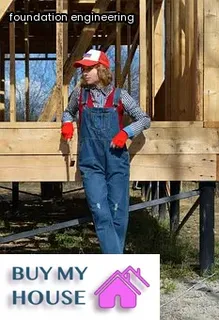When it comes to understanding water intrusion in block foundations, the key is to identify the source of any cracks or damage. Step cracks in a block foundation can be caused by a variety of things including weathering, aging, and shifting of the soil.
If left unchecked, these step cracks can lead to serious structural issues such as flooding and water damage. To prevent this from happening, it is important to inspect your foundation for any signs of damage and take steps to repair them as soon as possible.
An effective way to do this is by following a comprehensive guide for repairing step cracks in a block foundation. This includes evaluating the severity of the crack, preparing the surface and filling in the crack with mortar or concrete sealant.
Additionally, proper drainage should be installed around the perimeter of your foundation to prevent further water intrusion. Taking these steps will help ensure that your block foundation remains structurally sound and free from water damage for years to come.

Identifying foundation cracks in a block foundation can be difficult, but it is necessary to properly diagnose the cause and repair the damage. Step cracks are common in block foundations and can allow water to infiltrate the structure, leading to erosion and exacerbating any existing structural issues.
It is important to understand the differences between simple step cracks and more serious horizontal or vertical cracks that can signal a more severe problem. Generally, step cracks are less serious as they are caused by settling or shrinkage of the foundation.
Horizontal or vertical cracking could be indicative of a deeper issue such as hydrostatic pressure from water buildup or too much weight placed on the walls over time. Accurately diagnosing these issues requires an experienced eye, making it prudent to seek professional advice before attempting any repairs.
Cracks in a block foundation can be an indication of serious underlying structural problems. It is important to recognize these issues and take the necessary steps to repair them as soon as possible.
Step cracks, which appear like stairs or steps, are a common type of crack found in older block foundations. While they may seem small or insignificant, step cracks should not be ignored because they could indicate the foundation has settled inconsistently due to moisture or soil conditions.
Repairing step cracks involves assessing the severity of the issue, addressing any underlying causes, properly preparing the surface for treatment, and using appropriate materials for patching and sealing the cracks. When it comes to repairing step cracks in a block foundation, having a comprehensive understanding of all these steps is essential for ensuring that the job is done correctly and safely.

Hairline cracks in a block foundation may seem insignificant at first, but they can become larger over time and cause serious damage. Fortunately, repairing step cracks in a block foundation doesn't have to be stressful with the right guidance.
This comprehensive guide covers everything you need to know about identifying, assessing, and addressing hairline cracks in your block foundation. Start by inspecting the crack, paying attention to its size and shape as well as any other indications of possible structural damage.
If the crack is stable and less than 1/4 inch wide, you can likely repair it yourself with caulk or mortar mix. When using caulk, choose one that is specifically designed for masonry surfaces and apply it slowly and evenly along the length of the crack.
Mortar mix may require more effort but provides an even stronger seal when used correctly. No matter which product you use for repair, make sure to follow all instructions carefully for best results.
With this comprehensive guide to repairing step cracks in a block foundation, you can easily identify and address small issues before they become more serious problems down the road.
Sealing narrow and wider concrete cracks can be a challenging DIY project, but with the right tools, materials, and knowledge it is possible to effectively repair step cracks in a block foundation. Start by identifying the size of the crack so you know what type of filler to use.
For larger cracks (greater than ¼ inch), you need an epoxy or polyurethane foam sealant that will fill the entire crack and expand as it dries. When filling smaller cracks (less than ¼ inch) use a caulking compound or patching mix specifically designed for masonry surfaces.
To ensure proper adhesion and maximum strength, prepare the area around the crack by removing any dirt or debris, then wetting down the surface with a hose or wet rag before applying the sealant. Finally, apply pressure to ensure that the sealant penetrates deep into the crack and allow plenty of time for drying before using your block foundation again.

Foundation leak repair is a critical step for any homeowner with a block foundation. The longer you wait to address the issue, the worse it can become.
Acting fast is essential for the best results and a comprehensive guide to repairing step cracks in a block foundation is an invaluable asset. This guide can help you understand how these cracks form, why they occur and what steps to take in order to make repairs as quickly and effectively as possible.
Understanding the causes of these issues will also help inform your decisions on how best to fix them. In addition, this guide provides detailed instructions on the tools and materials needed for successful crack repair, along with tips on choosing a contractor and common mistakes that should be avoided during repairs.
With this comprehensive guide, homeowners can confidently diagnose and repair any step cracks they may find in their block foundation.
When it comes to repairing a cracked block foundation, many homeowners are concerned about the structural integrity of their home. A bulging wall with a large crack is a cause for concern because it can indicate that the underlying support structure has become weakened.
This is especially true if there are multiple cracks or larger sections of the wall appear to be bulging outward. The first step in assessing the extent of the damage is to determine whether the cracking is simply cosmetic or indicative of an underlying structural issue.
If the crack appears to have been caused by shifting soil or poor drainage, then the underlying structure may not necessarily need to be replaced, but rather only repaired and reinforced. On the other hand, if there is evidence of settling or subsidence, then it’s likely that more extensive repairs will be necessary.
Homeowners should also keep in mind that repairing step cracks requires experience and specialized tools which may require professional help. It’s important to contact a qualified contractor who can evaluate your foundation and provide you with a comprehensive repair plan that will ensure its longevity.

Horizontal vs Diagonal & Vertical Foundation Cracks – What to Know – Step cracks in a block foundation can be caused by a variety of factors, such as age, weathering, and settling. To repair them correctly and effectively, it’s important to understand the difference between horizontal, diagonal, and vertical foundation cracks.
Horizontal cracks typically occur when there is too much weight on one side of the wall or pressure from outside forces like trees or heavy equipment near the structure. Diagonal cracks are usually caused by settlement issues and require immediate attention since they indicate that the foundation is shifting and weakening.
Vertical foundation cracks are often caused by external pressure from soil against the walls of your home. All types of step cracks in a block foundation must be properly assessed for safety reasons before any repairs can begin, as certain types may need more extensive repairs than others.
Cracks in block foundations are an all-too-common problem that can cause serious water damage and other structural issues if not addressed. One of the most important factors to consider when assessing the severity of a foundation crack is whether or not it has changed direction.
A change in the direction of a foundation crack is often indicative of more significant damage, as it may be caused by shifting soil or other larger problems beneath the surface. It's important to note that vertical cracks are more common than horizontal cracks and can be caused by normal settling over time; however, if there is a noticeable shift from vertical to horizontal – or vice versa – then it's likely that trouble is brewing beneath the foundation.
If you notice this type of change occurring in your foundation, it's best to seek professional help immediately in order to repair the issue before it causes further damage.

Repairing step cracks in a block foundation is an important part of maintaining the structural integrity of a home. Step cracks occur when the concrete blocks used to form a foundation move and separate, resulting in gaps between the blocks.
In this comprehensive guide, we will explore the steps necessary to repair these cracks. First, inspect the crack and determine its size and shape as well as any water intrusion that has occurred due to the crack.
This will help you decide what type of materials are needed to make the repair. Next, clear out any dirt or debris in and around the crack with a brush and vacuum before applying a layer of concrete patching compound or masonry cement along both sides of the crack.
You may need to apply multiple layers depending on how deep and wide the crack is. After allowing each layer to dry, use an angle grinder or chisel to smooth out any rough edges left by the patching compound and then apply a sealant over top for extra protection from future water damage.
Finally, paint over all repaired areas for aesthetic purposes. By following these steps, you can ensure that step cracks in your block foundation are properly repaired for long-term stability and durability.
Repairing step cracks in a block foundation is essential for preserving the structural integrity of a home. However, it is just as important to take preventative measures to ensure the foundation does not sustain further damage.
One of the most effective strategies is to make sure the soil around the foundation remains properly graded and well drained. This helps reduce pressure on the foundation and prevents water from pooling near it.
Additionally, downspouts should be extended away from the home and any gutters should be checked regularly to make sure they are free of debris. If necessary, extension pipes can help direct water away from a house’s foundation.
During periods of extended drought, homeowners should consider supplementing water sources around their homes with regular applications of lawn irrigation or other methods to keep moisture levels balanced and soils stable. Regular inspection of foundations for signs of movement or cracking can also be beneficial since early detection can mean faster repair before more extensive damage occurs.
Taking these proactive steps can help protect foundations and avert costly repairs in the future.

Foundation repairs are a common home improvement project that many homeowners can handle on their own. However, when it comes to repairing step cracks in a block foundation, it is often best to call a professional.
Step cracks can be caused by water infiltration, soil expansion and contraction, building settlement, and other structural problems. While many of these issues can be addressed with DIY solutions, the complexity of a block foundation means the job should be left to an experienced specialist.
Professional contractors have the knowledge and experience to properly identify the source of the problem and provide an effective solution for long-term results. They also have access to specialized tools and materials that may not be available at local stores or online retailers.
Before attempting any repair work yourself, consider consulting with an expert who can assess the damage and advise you on whether professional assistance is necessary.
When it comes to repairing step cracks in a block foundation, homeowners must consider the costs associated with professional help versus doing the job themselves. DIY repair methods can be less expensive than hiring a professional and may require only basic tools and materials such as mortar, concrete, and an angle grinder.
However, depending on the severity of the cracks and damage to the foundation, it may be necessary to hire an experienced contractor who specializes in block foundation repairs. Professional services will often include an inspection of the entire area to determine any potential underlying causes and evaluate whether more extensive repair work is needed.
Additionally, they can provide advice on how to prevent further damage. Although hiring a professional may cost more upfront, it can save money in the long run by ensuring that all repairs are done correctly and efficiently.

Resolving water intrusion issues should be a priority when repairing step cracks in a block foundation. Water can cause serious damage to the structure, leading to costly repairs and even more serious long-term problems.
The first step is to identify where the water is entering the structure. This can be done by inspecting both the inside and outside of the foundation for visible signs of water intrusion.
Once identified, it’s important to determine the cause of the issue and take steps to ensure it doesn’t happen again. Depending on the severity of the crack, repairs may include sealing or patching with specialized products, or completely replacing sections of the foundation.
It’s also important to think about potential drainage solutions that will help divert water away from your home's foundation such as redirecting downspouts and grading soil around your house. Taking these preventative measures can help you avoid costly repairs in the future and keep your family safe from water-related hazards.
Sealing concrete foundations is an important step in protecting a home from water and other environmental damage. Different types of sealants and fillers can be used to plug up cracks and seal the foundation.
The most common type of sealant used for repairing step cracks in a block foundation is silicone caulking, as it is flexible enough to expand and contract with temperature changes. Epoxy resin is also an option, but it must be applied carefully, as it doesn’t have the same flexibility as silicone caulking when temperatures change.
Polyurethane foam sealants are great for filling large gaps or holes in concrete foundations, while hydraulic cement can be used for more precise repairs where extremely good adhesion is required. Acrylic caulk is often used to waterproof masonry walls and chimneys, as it sticks well to brick and mortar surfaces.
Lastly, urethane grout can also be effective at filling wider cracks in concrete foundations. Regardless of which type of sealant or filler you use, it’s important that all instructions are followed correctly for the best results.

Regular inspections of a home's foundation are essential for early detection of problems like step cracking in a block foundation. Careful examination of the basement walls and floors should be conducted on a regular basis to identify any potential issues.
Homeowners should look for visible signs of damage, such as cracks in the concrete blocks or mortar, water seepage, bowing or buckling walls, and shifting or settling foundations. Smaller issues can often be addressed quickly and easily with basic repairs.
If a problem is detected it is important to contact a professional contractor right away to assess the situation and determine the best course of action. Depending on the severity of the issue they may recommend repair methods like epoxy injection, crack stitching, carbon fiber reinforcement, and block replacement.
With regular inspections and prompt attention to any problems that arise, homeowners can ensure their property will remain structurally sound for years to come.
Proper drainage around your home's foundation is essential for optimal performance and will help prevent step cracks from forming in the block. Keeping the ground sloped away from the foundation, installing a gutter system, and making sure all downspouts are directed away from the foundation will keep water from pooling near the foundation walls and seeping into any cracks.
A French drain can also be installed to channel water away from the house. Make sure that any gutters and drains have adequately sized openings so they don't become clogged with debris or leaves.
Additionally, checking for sump pump failure or blocked pipes should be done regularly to ensure proper drainage of water. Although repairing step cracks in a block foundation can be difficult, taking preventative measures to maintain proper drainage around your home's foundation can keep it functioning optimally and help avoid costly repairs in the future.

One of the most important aspects of proper home maintenance is ensuring that your foundation remains in good condition. Step cracks in a block foundation can be an indication of potential problems with your home’s foundation, and it’s important to be aware of the different signs that might indicate you need professional assistance.
These signs can include outward leaning walls, buckling basement walls, doors and windows that stick, or cracks in drywall or other interior and exterior walls. If you notice any of these signs, it’s best to contact a professional to assess the damage and come up with a plan for repair.
In addition to visible signs such as those listed above, other issues such as uneven floors, water pooling near the foundation, and mold growth may also be a sign that the integrity of your home’s foundation has been compromised due to step cracks in your block foundation. It’s important to take action quickly if you suspect there’s an issue with your home's foundation as failure to address these issues can lead to larger structural problems down the line and expensive repair bills.
When selecting a contractor for any home foundation repair, it is important to do your research and find someone with the right qualifications and experience. Start by looking at their portfolio of completed projects; this will give you an indication of how reliable and professional they are.
It is also essential to ask about the materials they use for repairs, as there are different types available for different types of foundations. Furthermore, you should make sure that the contractor is insured and bonded against any potential damage caused during the repair process.
Always check customer reviews online before making your final decision, as this will provide you with a good insight into the quality of service they offer. Finally, always get a written estimate before hiring a contractor so that you know exactly what to expect upfront.

When it comes to repairing step cracks in a block foundation, there are many local building regulations and codes that must be taken into consideration. To ensure the best results, gathering reliable information about these relevant rules and regulations is essential.
This can include researching local zoning ordinances, building permits, safety requirements, and any other applicable laws prior to beginning the repair process. Additionally, while it is possible to complete some repairs without professional supervision or assistance, more serious issues may require the help of a licensed contractor who is familiar with local building codes and standards.
By doing thorough research ahead of time and consulting with experts when necessary, homeowners can make sure they are following the applicable guidelines for their area when completing any foundation repairs.
Yes, stair step cracks in a block foundation can be fixed! Repairing stair step cracks is an important step in maintaining the structural integrity of a home or building. In order to repair a stair step crack, homeowners need to identify the source of the problem, ascertain the extent of damage caused by the crack and then decide on a course of action.
Generally, minor cracks can be repaired with caulking and cement, while more severe damage may require replacing blocks or using epoxy injection techniques. It is also important to check for water infiltration in order to prevent further deterioration.
By understanding how to properly diagnose and fix stair step cracks in a block foundation, homeowners can ensure that their property remains safe and sound for years to come.

Step cracks in foundation walls can be a serious problem and should not be taken lightly. Step cracks are usually caused by settling of the soil beneath the foundation, which can lead to water and moisture seeping into your basement or crawlspace.
This can lead to further damage and deterioration in your home's foundation walls, as well as costly repairs. It is important to address any step cracks you may find right away, as they can quickly worsen if left untreated.
A comprehensive guide to repairing step cracks in a block foundation is key if you want to ensure that your home remains safe and secure. With the right tools and knowledge, you can tackle this issue yourself or hire a professional for more extensive repairs.
No matter what route you choose, it is essential that you take action as soon as possible for any step crack issues in order to prevent further damage.
Cracks in a block foundation are normal, especially for older homes. Over time, the foundation may experience wear and tear from weathering or shifting soil, resulting in step cracks.
It's important to recognize these common signs of damage and take the appropriate steps to repair them before they become bigger issues. A comprehensive guide to repairing step cracks in a block foundation can help you identify the problem, determine the severity of the crack, and provide solutions on how to fix it.
Properly addressing step cracks can prevent further damage and save you money in the long run.
Are cracks in cinder block foundation bad? It is important to understand that all foundations, including those made of cinder block, can experience cracking. While some small hairline cracks are not a cause for concern, larger or wider step cracks can be a sign of foundation problems and should be inspected by a professional.
A comprehensive guide to repairing step cracks in a cinder block foundation requires careful assessment of the underlying issues causing the damage. Factors such as water drainage, water table levels, shifting soils, and other environmental conditions can contribute to the formation of step cracks in a cinder block foundation.
Without proper repair or mitigation measures in place, these larger step cracks can lead to further damage and potentially costly repairs down the road. Taking proactive steps toward identifying and repairing any existing step cracks is essential for ensuring a safe and secure home foundation.
A: Footings can be installed around the perimeter of the CMU block wall, below the level of the foundation. To fill in the step cracks, a new layer of concrete should be poured over the footings, ensuring that it is properly cured before additional construction is done.
A: Clay soils can be stabilized by adding sand and other materials to the soil, compacting the soil around the block foundation, and providing adequate drainage to help prevent further cracking.

A: Tree roots can cause soil expansion and contraction when they grow, leading to shifting of the soil beneath the foundation. Additionally, heavy rainfall can add pressure to the foundation walls, resulting in step cracks over time.
A: Steel plates can be placed over the area of the step crack and secured with mortar joints. To ensure the proper installation of the steel plate and mortar joints, it is recommended to consult a structural engineer.
A: To avoid potential stresses, structural overload, and structural failure when repairing step cracks in a block foundation, it is important to ensure the crack is properly sealed with a high-quality sealant. Additionally, any deeper underlying issues should be addressed by a professional to prevent further damage.
A: A structural engineer can assess the severity of the step cracks and recommend an appropriate repair plan. They may also be able to provide design support for more complex repairs that involve reinforcing or stabilizing the foundation.